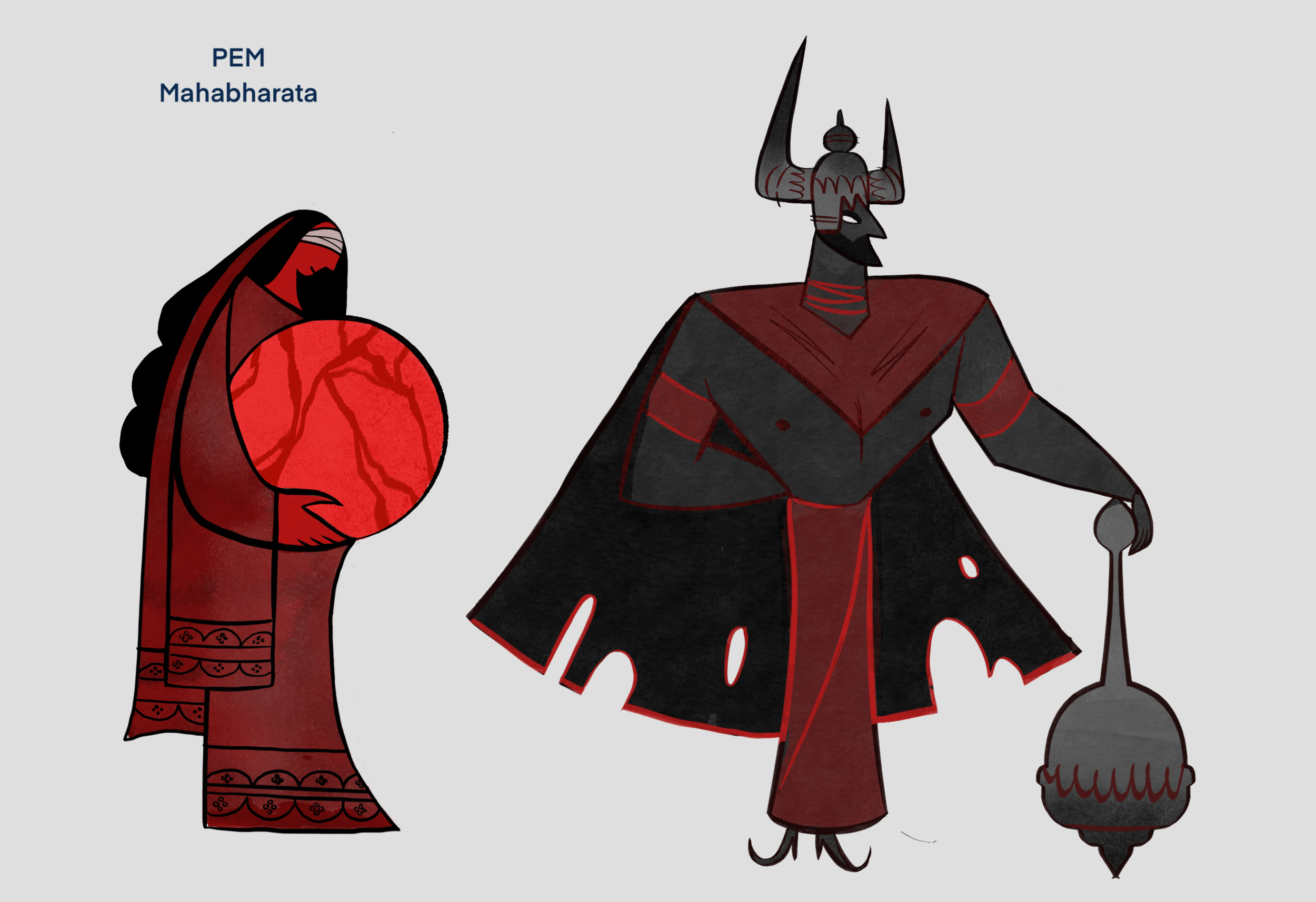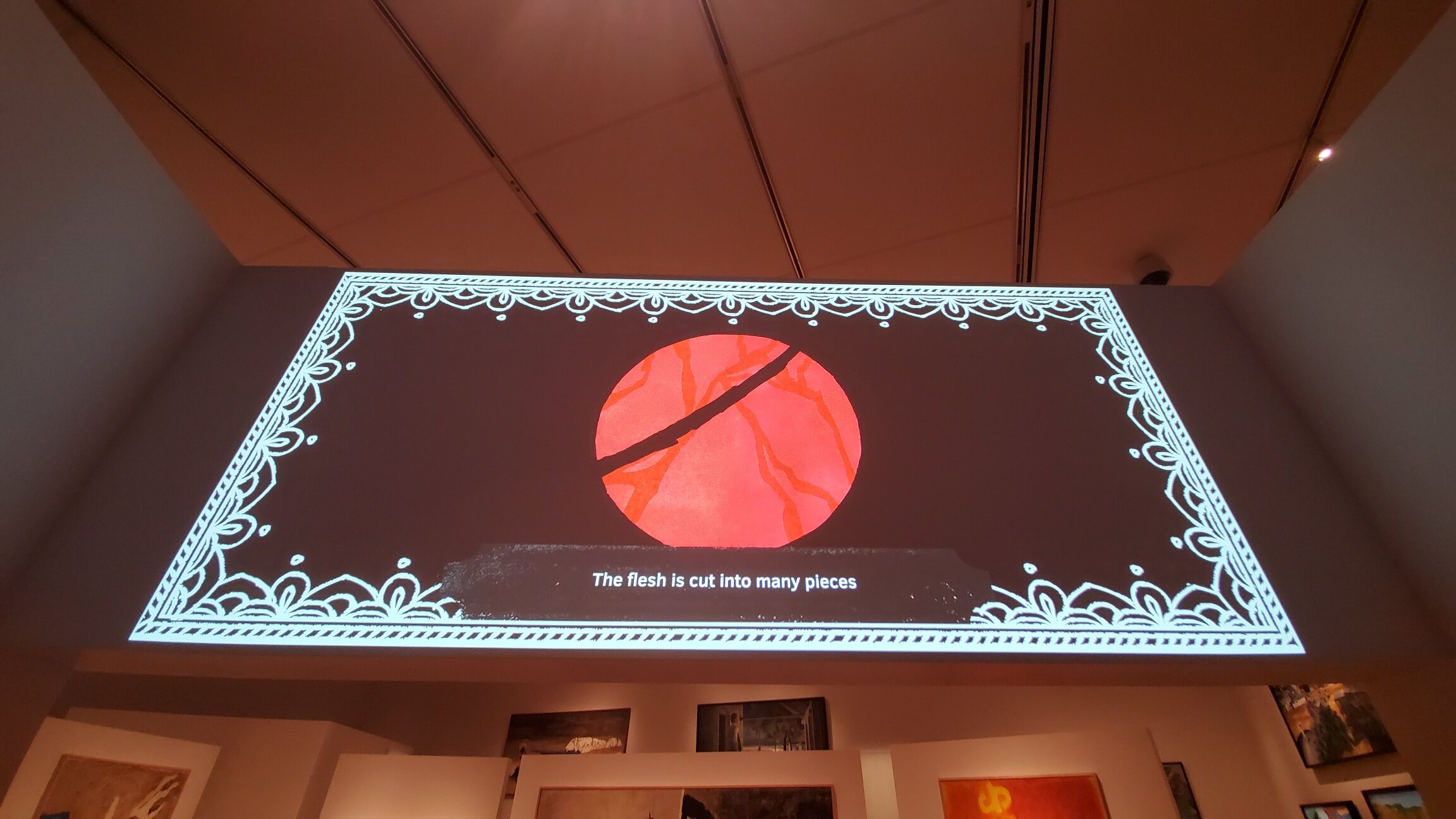Mahabharata Gallery Animation
FableVision Studios was hired by the Peabody Essex Museum to create an animation that would serve as a primer on the Mahabharata epic for guests of the South Asian Gallery’s MF Hussain exhibit. MF Hussain is a Muslim artist famous for his depictions of religious Hindu stories. Because the artist’s background and work can be considered controversial, it was important that our animation be as traditional and respectful of the text as possible, while complementing the modern aesthetic of Hussain’s work. This animation was going to be displayed on the wall entering the exhibit, to give the feeling of entering the story at the same time.
Summarizing the Longest Story Ever Told
While adapting a religious text is always a visual challenge, our writers also had their work cut out for them: The Mahabharata is the longest poem ever written. If one were to combine the Iliad and the Odyssey, and multiply the length 10 times over, the Mahabharata would still be longer. We had to compress this story into a 3.5-minute narrative without using ANY audio (since it will live on a gallery wall). To do this, in addition to everyone on the team doing extensive cultural research, we made our client a part of the production team: After all, they were true experts on the subject! Ed Rodley advised on scope, while Siddhartha Shah and Lan Morgan provided their expertise on Hindu faith, art, and culture. They helped us to identify which elements to preserve, how to accurately design characters in a way that aligned with the look, and where to support the visuals with narrative captions.
Coordinating Long Distance
When the project had initially kicked off, we had a team of individuals, including freelancers, that were ready and willing to work in the studio or at the museum. However, 2020 had other plans. Around when we needed to finalize dimensions so we could begin the storyboard and design process, the COVID-19 pandemic began and all institutions were locked down, including the studio and the museum. We then had to handle a few different problems:
With the museum closed, the budget was cut, meaning we had fewer projectors and a smaller wall to work with. We also could not access the wall to take appropriate measurements, but had imminent, final decisions to make about dimensions.
With the studio closed, collaborative work ground to a halt. We had to change our process from doing design and animation screenings in the project to doing it remotely with rendered videos. The render process is a long one (especially with 2:1 ratio and 6k dimensions), so this slowed us down immensely.
With schools closed, a number of our staff were now balancing childcare, which meant we had to make the team larger, with everyone having less concurrent time to work on the project.
As the Producer, it was my job to solve this logistical nightmare. I worked closely with the Art Director to determine the best way to handle project assembly, art reviews, and pipeline management. We reduced the resolution of our renders significantly for the purpose of subject matter approval, saving the higher resolution renders for when we needed an Art Director’s eye. We also applied a more Agile-like approach to shot distribution: we had some shots that were better for one team member over another, but as we got closer to the deadline, we treated each shot like its own scrum card, and asked artists and animators alike to swarm on the work.
When We Got Back Into the Space
The exhibit opened on Thanksgiving weekend. Because of the quick decisions we had to make regarding the dimensions of the wall, the animation looked beautiful, but didn’t quite fit.
We had a number of conversations with the museum on the best way to get the animation to fit without compromising quality or forcing the team to reanimate 2/3 of the project. We discussed finding a space filler that would aligned with the width, and ultimately suggested columns. We brought the team back together, including Siddhartha Shah and Lan Morgan, to design a modern frame that references the style of ancient Hindu temples. It was a pleasure to bring the team back together to update one of the studio’s favorite projects!
FableVision Team
Melissa Schoeller - Producer
Bob Flynn - Art Director
Jane Winters - Lead Designer
Christina Kelly - Lead Designer
Didi Hatcher - Animator
Julie Oliveira - Artist
David Welsh - Writer
Mackenzie Bright - Production Assistant
Partners at PEM
Siddhartha Shah - Curator of South Asian Art, Director of Education and Civic Engagement
Lan Morgan - Assistant Curator for Exhibitions and Research
Ed Rodley - Associate Director of Integrated Media
Chip Van Dyke - Manager of Media Production



